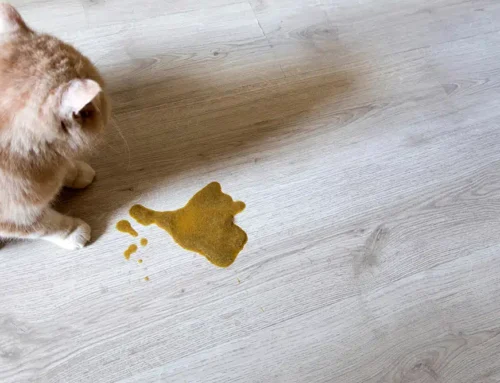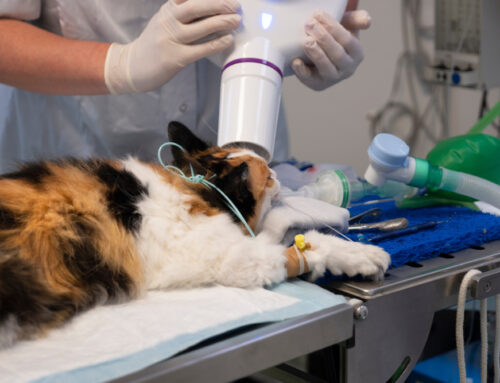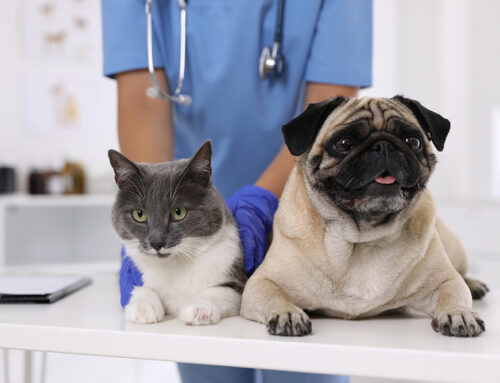Understanding your cat’s health is key to ensuring they live a long, comfortable, and happy life. One of the most common illnesses affecting cats—especially in shelters, multi-cat households, and outdoor environments—is the feline upper respiratory infection (URI).
At Star of Texas Veterinary Hospital in Austin, Texas, we’re here to help you recognize, treat, and prevent URIs through compassionate, expert care.
What Is a Feline Upper Respiratory Infection?
A feline URI is an infection that affects the nose, throat, and sinuses, caused by viruses and bacteria. The most common pathogens include:
- Feline herpesvirus (FHV-1)
- Feline calicivirus (FCV)
- Bordetella bronchiseptica
- Chlamydia psittaci
While URIs are often mild, they can lead to serious complications like pneumonia or chronic respiratory disease if left untreated.
URIs are highly contagious, especially in shared environments. Early identification not only speeds up your cat’s recovery but also prevents the spread to other animals.
Contact Us if you suspect your cat may have a URI.
Causes of Feline Upper Respiratory Infections
Common Infectious Agents
- Feline Herpesvirus (FHV-1)
Causes sneezing, eye discharge, and can lead to chronic infections. - Feline Calicivirus (FCV)
Often results in oral ulcers, joint inflammation, and sometimes pneumonia. - Bordetella bronchiseptica
Linked to kennel cough in dogs, but also causes coughing and nasal discharge in cats.
Learn more from International Cat Care - Chlamydia psittaci
Typically causes conjunctivitis and respiratory symptoms.
Risk Factors
- Crowded environments (e.g., shelters)
- Young kittens or senior cats with weak immune systems
- Outdoor exposure
- Lack of core vaccinations
Explore Feline Upper Respiratory Infections – ASPCA Pro
Symptoms of Feline URIs
Early Signs to Watch For
- Frequent sneezing
- Clear or cloudy nasal discharge
- Coughing
- Watery or irritated eyes
- Decreased appetite
- Lethargy or reduced playfulness
Advanced Symptoms That Need Immediate Attention
- Thick, greenish nasal discharge
- Difficulty breathing
- Persistent fever
- Oral ulcers (commonly from calicivirus)
- Signs of dehydration (dry gums, sunken eyes)
How URIs Are Diagnosed and Treated
Veterinary Diagnostic Process
- Physical exam to assess breathing, lung sounds, and eye/nose discharge
- PCR testing to identify viruses or bacteria
- Blood work and cultures if bacterial infection is suspected
Treatment Strategies
- Antivirals for managing FHV-1 symptoms
- Antibiotics for secondary bacterial infections
- Supportive care: Includes fluids, appetite stimulants, and steam/humidifier therapy
Preventing the Spread of URIs
- Isolate infected cats from other pets
- Disinfect surfaces and wash hands after contact
- Limit social interaction between pets until fully recovered
Vaccinations: Your Cat’s Best Defense
Core Vaccines to Prevent URIs
- Feline Herpesvirus (FHV-1)
- Feline Calicivirus (FCV)
- Bordetella (recommended for high-risk cats)
- Feline Leukemia Virus (FeLV) for at-risk or immunocompromised cats
Why Vaccination Matters
Vaccines don’t always prevent infection entirely, but they can greatly reduce severity and shorten recovery time. Vaccination is especially critical for:
- Kittens
- Outdoor cats
- Cats in multi-pet households
Learn more:
Vaccinations for Pet Owners – AVMA
Feline Vaccination Guidelines – AAHA
When to Visit the Veterinarian
Know When to Seek Care
- Persistent symptoms (more than 5–7 days)
- Breathing difficulty
- Refusal to eat or drink
- Sudden lethargy or hiding behavior
Why Regular Veterinary Visits Matter – AAHA
What to Expect During a Vet Visit
- Full physical exam
- Diagnostic testing if needed
- Customized treatment plan based on your cat’s symptoms and health history
- Recommendations for ongoing monitoring or recheck visits
Compassionate, Expert Care at Star of Texas Veterinary Hospital
Feline upper respiratory infections are common but manageable with the right approach. The team at Star of Texas Veterinary Hospital is here to provide your cat with accurate diagnosis, personalized treatment, and preventative care for a healthier future.
If your cat is showing signs of a URI or you have concerns about their respiratory health, schedule a visit today. We’re here to help them breathe easier.







